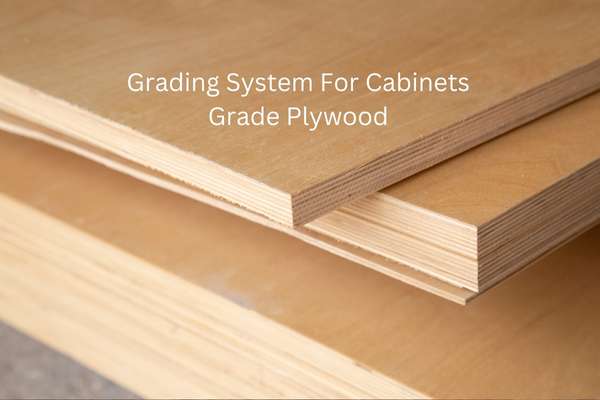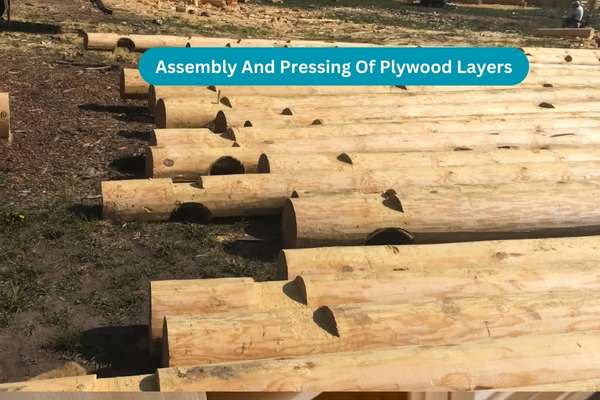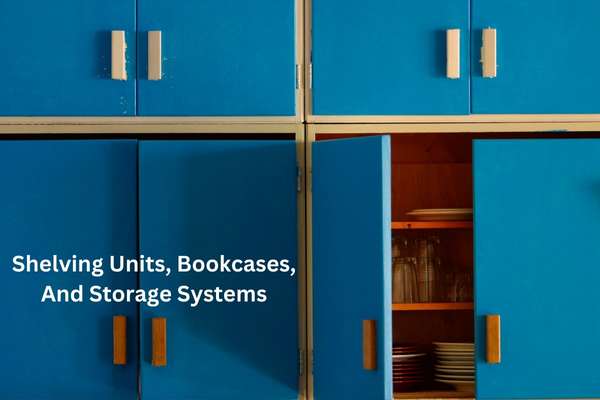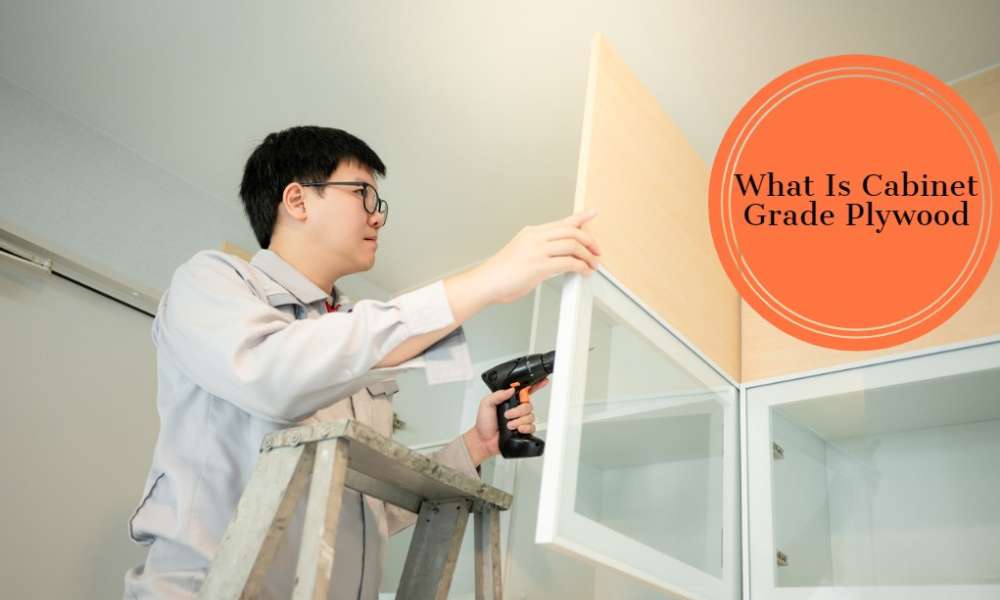Cabinet grade plywood is a premium quality wood panel that is specifically manufacture for applications in cabinetry, furniture-making, and high-end woodworking projects. It is made by layering thin sheets of wood veneer, bonded together with strong adhesives, resulting in a strong and stable material. Cabinet grade plywood is highly valued for its superior strength, durability, And aesthetic appeal, making it An essential component in the construction And woodworking industries. Its versatility allows it to Be use in A wide range Of applications, from kitchen cabinets And furniture to architectural millwork, ensuring exceptional craftsmanship And long-lasting results.
What Kind Of Plywood Is Cabinet-Grade Plywood?

Cabinets-grade plywood is a premium type of veneer board that stands out for its exceptional quality and construction. It is typically crafted from hardwood or high-quality softwood veneers, ensuring strength and durability. The manufacturing process involves bonding multiple layers of veneer using strong adhesives, resulting in a sturdy and stable panel. This is renowned for its uniform thickness, smooth surfaces. And minimal imperfections, making it highly desirable for applications where aesthetics are important, such as cabinetry, furniture making, and fine woodworking projects. Its superior quality And reliable performance have made it A preferred choice among professionals in the construction And woodworking industries.
How Is Cabinet-Plywood Graded?
Cabinets-grade plywood is evaluated and graded based on the quality and visual characteristics of its surface veneers. The grading system typically utilizes letters, such As A, B, C, or D, to indicate the different levels Of quality. Grade A plywood exhibits the highest quality with minimal defects, such as knots or patches, and is suitable for applications where a flawless appearance is essential. Grade B allows for slightly more imperfections, while Grade C and Grade D veneer board may have more noticeable defects and are often used in applications where aesthetics are less critical or when the veneer board will be covered or painted. The grading system helps users select the appropriate plywood based on their specific requirements and desired visual appeal.
Cabinet Grade Plywood

1. Plywood Structure And Layers

Cabinets grade plywood consists of multiple layers or plies of wood veneer that are bonded together using strong adhesives. These layers are stacked in a cross-grain configuration, which enhances the panel’s strength and stability. The cross-grain arrangement helps to prevent warping and adds structural integrity to the plywood. Typically, an odd number of layers is used to maintain balance and stability.
2. Types Of Wood Used In Cabinets Grade Plywood

It can be made from various types of wood, including hardwood and high-quality softwood species. Hardwood plywood is commonly used And may include species such as oak, birch, maple, Or cherry. These hardwood veneers provide excellent strength and a visually appealing surface. Alternatively, high-quality softwood species like pine or fir may be used in the production of cabinet grade veneer board, offering a balance between strength and cost-effectiveness.
3. Grading System For Cabinets Grade Plywood

Cabinets grade plywood follows a grading system based on the quality and appearance of the surface veneers. The grading scale typically includes letters such As A, B, C, Or D. Grade A represents the highest quality with minimal defects, while Grade D allows for more noticeable imperfections. This grading system helps users select plywood with the desired aesthetic characteristics for their specific applications.
4. Key Characteristics, Such As Strength, Durability, And Stability
This is known for its exceptional strength, durability, and stability. The cross-grain construction and use of high-quality adhesives result in a panel that can withstand the demands of construction and woodworking projects. Cabinet grade veneer board is less prone to warping, shrinking, or expanding compared to solid wood, making it a reliable choice for applications where dimensional stability is crucial. It can handle heavy loads and withstand the rigors Of daily use, Ensuring long-lasting performance. Additionally, cabinets grade plywood is typically design to have a smooth and uniform surface, allowing for easy finishing and providing an aesthetically pleasing result.
Manufacturing Process Of Cabinet Grade Plywood
1. Log Selection And Preparation

The manufacturing process begins with the selection of high-quality logs. Logs with desirable properties, such as straight grain and minimal defects, are chosen. These logs are then debarked and cut into desired lengths for further processing.
2. Veneer Production And Preparation

The logs are process into veneer sheets using a rotary cutting or slicing method. In the rotary cutting method, the logs are rotated against a knife, producing continuous sheets of veneer. Slicing involves cutting thin layers from the log using a blade. The veneer sheets are then drier to remove moisture and achieve the desired moisture content.
3. Assembly And Pressing Of Plywood Layers

The dried veneer sheets are sorted based on their quality and characteristics. In the assembly stage, the selected veneers are layered together with their grains oriented perpendicular to each other. This cross-grain configuration provides strength and stability to the veneer board. Strong adhesives, such as phenolic resin or melamine formaldehyde, are applie between the layers to bond them together. The layered assembly is placed into a hydraulic press. Where heat and pressure are applied to cure the adhesive and create a solid, cohesive panel.
4. Finishing And Sanding Processes
Once the plywood panel is formed, it undergoes a series of finishing processes. This includes trimming the edges to achieve precise dimensions and sanding the surfaces to create a smooth and uniform appearance. The sanding process removes any imperfections, such as rough spots or irregularities, and prepares the veneer board for further treatments or finishing options, such as painting, staining, or veneering.
Quality Standards And Certification
1. Industry Standards For Cabinet Grade Plywood
This is subject to industry standards that define its quality and performance requirements. These standards ensure consistency and reliability in the manufacturing and use of cabinet grade veneer board. In the United States, the American National Standards Institute (ANSI) and the Hardwood Plywood and Veneer Association (HPVA) have established guidelines and standards for plywood, including cabinets grade veneer board. These standards outline specifications for dimensions, glue bonding strength, veneer quality, and other relevant criteria.
2. Certifications And Grading Agencies
Certifications and grading agencies play a crucial role in ensuring the quality and reliability of cabinets grade veneer board. They provide independent verification and oversight, giving customers confidence in the product they are purchasing. For example, the Forest Stewardship Council (FSC) certification ensures that the plywood comes from responsibly managed forests that meet environmental and social standards. Other certifications such as the Sustainable Forestry Initiative (SFI) and the Programmed for the Endorsement of Forest Certification (PEFC) also promote sustainable and responsible sourcing practices.
3. Importance Of Choosing Certified Cabinet Grade Plywood
Choosing certified cabinet grade veneer board offers several benefits. Firstly, certifications such as FSC, SFI, or PEFC provide assurance that the plywood has been responsibly source, promoting sustainable forestry practices and environmental conservation. By selecting certified plywood, customers can support the protection of forests and contribute to sustainability efforts.
Advantages Of Cabinet Grade Plywood

1. Enhanced Strength And Stability Compared To Lower Grades
Cabinet grade plywood is known for its superior strength and stability compared to lower-grade veneer board. The multiple layers of veneer and cross-grain construction provide enhanced structural integrity, making it highly resistant to bending, warping, and sagging. This strength and stability make cabinet grade veneer board suitable for demanding applications that require robust and long-lasting performance.
2. Resistance To Warping, Shrinking, And Cracking
One of the key advantages of cabinet grade veneer board is its resistance to warping, shrinking, and cracking. The cross-grain construction minimizes the effects of moisture and temperature changes, reducing the likelihood of the plywood distorting or deforming over time. This dimensional stability is particularly important in environments with fluctuating humidity levels, such as kitchens and bathrooms. Cabinets grade veneer board maintains its shape and integrity, ensuring that cabinets, furniture, and other woodworking projects retain their original form and functionality.
Applications Of Cabinet Grade Plywood

1. Kitchen Cabinets And Furniture

This is widely used in the construction of kitchen cabinets and furniture. Its strength, stability, and smooth surfaces make it an ideal choice for creating durable and visually appealing cabinetry. Whether it’s for residential or commercial kitchens, cabinet grade veneer board provides a reliable and long-lasting solution that can withstand the demands of everyday use.
2. Cabinetry In Bathrooms, Bedrooms, And Living Areas
In addition to kitchens, cabinet grade veneer board is suitable for cabinetry in other areas of the home, including bathrooms, bedrooms, and living areas. Its resistance to moisture and warping makes it suitable for humid environments such as bathrooms. It can be use to create storage cabinets, built-in wardrobes, entertainment centers, and other functional and stylish furniture pieces throughout the home.
3. Architectural Millwork And Interior Design Projects
Cabinets grade plywood finds extensive use in architectural millwork and interior design projects. It is commonly use for decorative panels, wall cladding, wainscoting, and other interior elements that require both aesthetics and durability. Its versatility allows for customization and creative design solutions, making it a popular choice among architects, interior designers, and contractors for various commercial and residential projects.
4. Shelving Units, Bookcases, And Storage Systems

Cabinets grade veneer board is well-suited for constructing sturdy and functional shelving units, bookcases, and storage systems. Its enhanced strength and stability ensure that the shelves can support heavy loads without sagging or warping. With proper finishing and customization, cabinets grade plywood can transformed into stylish and practical storage solutions for both residential and commercial settings.
Factors To Consider When Selecting Cabinet Grade Plywood
1. Thickness Options And Appropriate Uses
Consider the available thickness options of cabinets grade plywood and their suitability for your specific project. Thicker veneer board is generally stronger and more suitable for heavy-duty applications like cabinets or structural elements, while thinner plywood may be more appropriate for lighter applications such as shelving or interior paneling. Ensure that the chosen thickness aligns with the intended use and load-bearing requirements of your project.
2. Veneer Quality And Appearance
Examine the quality and appearance of the veneer used on the surface of the veneer board. Look for consistent grain patterns, minimal defects, and a smooth finish. Select veneers that align with your desired aesthetic, whether it’s a specific wood species or a particular color and grain pattern. Pay attention to the grading system and choose a grade that meets your expectations for the visible surfaces of your project.
3. Core Construction And Its Impact On Strength And Stability
Evaluate the core construction of the cabinets grade veneer board, as it significantly affects the strength and stability of the panel. Different cores, such as veneer core, particleboard core, or medium-density fiberboard (MDF) core, offer varying levels of stability and structural integrity. Veneer core plywood, composed of multiple layers of hardwood veneer, is generally consider more stable and stronger compared to particleboard or MDF cores. Consider the specific demands of your project and choose a core construction that aligns with your needs.
4. Environmental Considerations And Sustainability
Take into account the environmental impact and sustainability of the cabinets grade veneer board you choose. Look for certifications such as FSC (Forest Stewardship Council), SFI (Sustainable Forestry Initiative), or PEFC (Programmed for the Endorsement of Forest Certification) to ensure responsible sourcing and sustainable practices. These certifications provide assurance that the plywood comes from well-managed forests or sustainable sources, promoting environmental conservation.
Working With Cabinet Grade Plywood
Working with cabinet grade plywood requires attention to detail and proper handling. Its enhanced strength and stability make it suitable for various construction and woodworking projects. When working with cabinets grade plywood, ensure accurate measurements and precise cutting to achieve seamless joinery. Take care to handle the plywood with care to prevent damage to the edges and surfaces. Use appropriate tools and techniques for assembly and installation, considering the weight and load-bearing requirements of the project. Additionally, follow recommended safety practices, such as wearing protective gear and using proper ventilation when cutting or sanding the plywood. By employing these practices, you can achieve high-quality results and maximize the benefits of working with cabinet grade plywood.
Cleaning And Maintenance Practices
To maintain the quality and appearance of cabinets grade veneer boards, regular cleaning and maintenance are essential. Dust the surfaces regularly using a soft cloth or feather duster to prevent scratches. For routine cleaning, use a mild, non-abrasive cleaning solution mixed with water and wipe gently. Promptly clean up spills to prevent moisture damage. Avoid harsh chemicals and abrasive cleaners that could harm the finish or veneer. By following these practices, you can keep cabinets grade veneer boards looking its best and prolong its lifespan.
Protection Against Moisture, Insects, And Other Hazards
Protecting cabinets grade veneer boards against moisture, insects, and other hazards is crucial for maintaining its integrity and longevity. Applying a suitable finish, such as a sealant or waterproof coating, helps protect against moisture damage and prevents warping or swelling. Ensure proper ventilation in storage or installation areas to minimize humidity levels. Regularly inspect and address any signs of insect infestation by using appropriate insecticides or preventive measures. Additionally, avoid exposing the plywood to extreme temperature fluctuations or direct sunlight, as these can cause deterioration. By taking proactive measures to protect against these hazards, you can ensure the long-term durability and performance of cabinets grade veneer boards.
Safety Precautions When Working With Cabinets Grade Plywood
When working with cabinets grade veneer boards, it is important to prioritize safety. Wear appropriate personal protective equipment (PPE) such As safety glasses, gloves, And A dust mask to protect against potential hazards. Ensure proper ventilation in the work area to minimize the inhalation of sawdust or fumes. Use sharp, well-maintained tools and follow safe cutting and routing techniques to prevent accidents. Secure the plywood properly during cutting and assembly to avoid unexpected movement or instability. By adhering to these safety precautions, you can minimize the risk of injuries and create a safe working environment when working with cabinets grade plywood.
Environmental Impact Of Cabinets Grade Plywood
The environmental impact of cabinets grade veneer boards can vary depending on several factors, including the sourcing of the wood, manufacturing processes, and disposal practices. Sustainable forestry practices, such as those certified by organizations like the Forest Stewardship Council (FSC), ensure responsible wood sourcing and promote biodiversity conservation. Additionally, using low or no formaldehyde-emitting adhesives reduces indoor air pollution. Proper waste management and recycling of plywood waste can further minimize the environmental impact. By selecting sustainably sourced plywood and adopting eco-friendly manufacturing and disposal practices, the environmental impact of cabinets grade veneer boards can be significantly reduce.
The Final Thoughts
Cabinets grade plywood offers numerous benefits and applications in cabinetry and woodworking. Its enhanced strength, stability, and resistance to warping make it ideal for creating durable and visually appealing kitchen cabinets, furniture, architectural millwork, and storage systems. By selecting certified veneer board, considering factors like veneer quality and core construction, and following proper cleaning, maintenance, and safety practices, craftsmen can ensure long-lasting and high-quality results. Using high-quality plywood is essential for achieving successful and aesthetically pleasing outcomes, highlighting the importance of choosing the right materials in cabinetry and woodworking projects.
